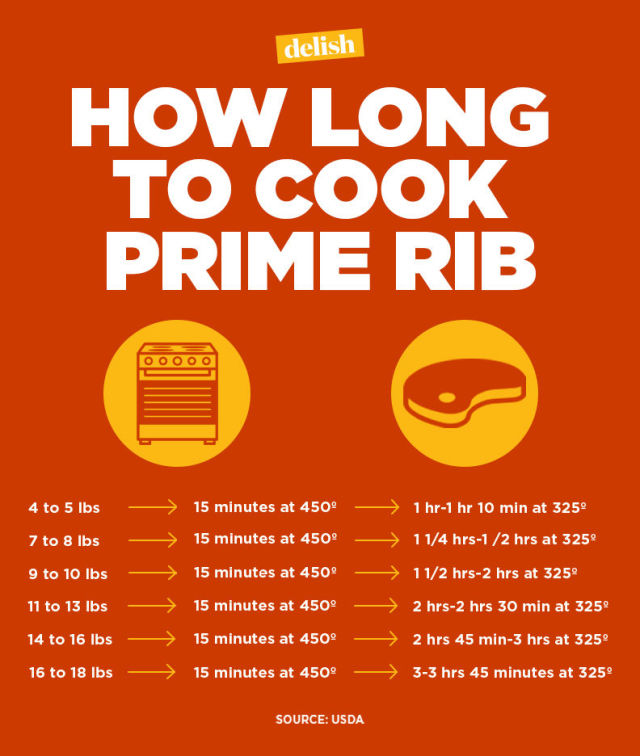Mastering the 10-Pound Rib Roast: Cooking Time and Tips

Picture this: a beautifully browned, succulent 10-pound rib roast, the centerpiece of your holiday feast. The aroma fills the air, promising a melt-in-your-mouth experience. But achieving this culinary masterpiece requires more than just wishful thinking. It demands a precise understanding of cooking times and techniques. The quest for the perfect roast can be daunting, but fear not, this guide will equip you with everything you need to know to conquer the 10-pound rib roast.
Determining the cooking time for a 10-pound rib roast isn’t a one-size-fits-all equation. Several factors influence the ideal duration, including the desired doneness, oven temperature, and the roast's specific characteristics. We'll delve into these variables and provide a clear roadmap to navigate the roasting process successfully.
The rib roast, a cut from the rib section of beef, has a long and rich culinary history. Its inherent marbling and tender texture make it a prized choice for special occasions. Historically, roasting large cuts of meat was a communal affair, often celebrating harvests and festivities. Today, the tradition continues, with the rib roast holding a prominent place on holiday tables worldwide. However, the modern kitchen presents new challenges, such as oven variations and individual preferences, making precise timing even more crucial.
One of the main challenges in roasting a 10-pound rib roast is achieving uniform doneness. The outer layers can easily overcook while the center remains underdone. This issue stems from the roast's size and the varying temperatures within an oven. Understanding how heat transfers through the meat and utilizing techniques like low and slow roasting or reverse searing can significantly improve the outcome.
A crucial step in calculating the cooking duration for your 10-pound rib roast is understanding the desired level of doneness. Rare refers to a cool center, medium-rare to a warm center, medium to a hot center, and well-done to a fully cooked center. Each level corresponds to a specific internal temperature, which can be accurately measured using a meat thermometer. This tool is essential for eliminating guesswork and ensuring food safety.
A general guideline for roasting a 10-pound rib roast at 325°F (163°C) is approximately 13-15 minutes per pound for rare, 15-17 minutes per pound for medium-rare, and 17-20 minutes per pound for medium. However, these are estimates, and using a meat thermometer is crucial for accurate doneness.
Benefits of proper roasting times: 1. Enhanced Flavor: Achieving the right doneness maximizes the roast's natural flavors. 2. Tender Texture: Proper cooking ensures a melt-in-your-mouth texture. 3. Food Safety: Accurate timing eliminates the risk of undercooked meat.
Action Plan: 1. Preheat oven. 2. Season the roast. 3. Sear the roast (optional). 4. Roast at desired temperature. 5. Check internal temperature. 6. Rest the roast before carving.
Checklist: Meat thermometer, roasting pan, seasonings, twine (optional), cutting board.
Tips and Tricks: Let the roast come to room temperature before cooking. Use a roasting rack for even cooking. Resting the roast allows the juices to redistribute, resulting in a more tender and flavorful final product.
Advantages and Disadvantages of Different Cooking Methods
No table provided as none applicable.
FAQ: 1. What temperature should I roast a 10-pound rib roast? A: 325°F (163°C) is recommended. 2. How long should I rest the roast? A: At least 20 minutes. 3. Should I sear the roast? A: Searing adds a flavorful crust. 4. Can I cook the roast at a higher temperature? A: Higher temperatures can result in uneven cooking. 5. What is the best way to store leftovers? A: Refrigerate leftovers within two hours. 6. Can I use a slow cooker? A: Slow cookers are not ideal for large roasts. 7. How do I prevent the roast from drying out? A: Avoid overcooking and use a meat thermometer. 8. What sides go well with rib roast? A: Roasted vegetables, potatoes, and Yorkshire pudding.
In conclusion, mastering the art of cooking a 10-pound rib roast involves understanding the interplay of time, temperature, and technique. By following the guidelines outlined in this comprehensive guide, you can confidently prepare a show-stopping centerpiece for any special occasion. Remember, achieving the perfect rib roast is not merely about following a recipe; it’s about understanding the science behind the process and embracing the nuances of your own oven and preferences. The rewards are undeniable – a tender, juicy, and flavorful roast that will impress your guests and leave them craving more. So, gather your ingredients, preheat your oven, and embark on this culinary adventure. The perfect rib roast awaits!
Decoding bcbs medicare plan g your guide to supplemental coverage
Pilgrimage savings exploring tabung haji batu pahat
Ultimate guide to scrubs with cup holders for women













